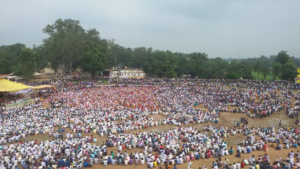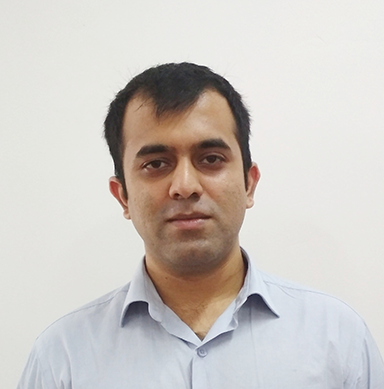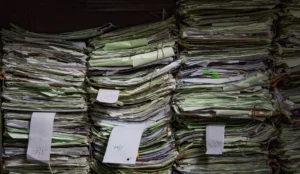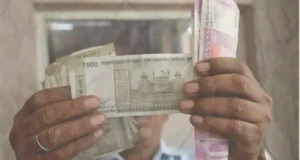

Election Litigation as a Political Strategy
High Courts have recently heard cases on election disputes in India. In April 2021, the Manipur High Court ruled that the election of an MLA is null and void, since he failed to disclose details of pending criminal cases against him and misrepresented his educational qualifications.[1] In another recent case, the Andhra Pradesh High Court ruled that there can be no exceptions to constitutional provisions which require that election results can only be challenged through election petitions.[2]
Article 329 (b) of the Constitution of India holds that no election to either house of parliament or any state legislature can be challenged except through an election petition. The appropriate authority for presentation of these petitions, and the process for doing so, can only be established through laws made by the appropriate legislature. The Representation of the People Act, 1951 (The RP Act) was passed to give effect to this provision. The RP Act states that jurisdiction to try these petitions lies with the High Court.[3] Some grounds for declaring an election to be void are that a returned candidate was disqualified or not qualified to stand for election, that they committed a corrupt practice, that the nomination of any candidate has been improperly rejected.[4] The result may also be declared void if it has been materially affected by any corrupt practice in the returned candidate’s interests, provided that this practice was not conducted by them or their agent and was contradictory to their orders. The petitioner may also claim that they themselves or another candidate was duly elected.[5] If the petition is not dismissed, the Court may rule that the petitioner or another candidate has been duly elected,[6] and if not, bye-elections would be held in the constituency.[7]
The RP Act mandates that election petitions generally be heard on a daily basis to expedite disposal. In spite of these provisions, data reveals that the progress of election petitions are characterised by delay. Data from the High Courts of Madhya Pradesh, Karnataka, and Gujarat show that more than half of the election petitions filed in these courts between 2008 and 2020 took more than two years to be disposed of.[8] Examination of the orders in these cases is revealing, In Madhya Pradesh, the courts were lenient in granting adjournments and parties and advocates for both petitioners and respondents are frequently absent. [9] In Karnataka, petitioners themselves were reported to be lackadaisical in rectifying office objections. [10] Interim applications were shown to have a significant effect in stalling proceedings, for a range of purposes.
It is evident that while the provisions for election petitions are intended to provide a means for citizens to ensure the fairness of elections, the data suggests that they may be used tactically, with political ends ranging from securing a more favourable electoral outcome or to obstruct rival candidates and parties from forming a government. This has serious implications for the stability of government and the integrity of the democratic process.
The recent spate of post-election litigation in the US provides an interesting case study of how candidates may attempt to use election litigation tactically, rather than purely with the fairness of elections in mind. Krishnamurthi and Salib model post-election litigation as a political strategy, and test it on data from the 2020 US Presidential election. [11] This reveals that litigation tends to occur in closely-fought constituencies, and that this is closely tied to perceptions of the legitimacy of the result.[12] This apparently intuitive conclusion has serious implications for electoral democracy and the role of litigation within it, which merit empirical investigation in India.
If the trial of election petitions in India are characterised by delay and stalling tactics, an interesting question to investigate would be the correlation between the filing of election petitions with the strategic position of the returned candidate and their party, as well as that of the petitioner if they claim to be the duly elected candidate. The presence of such a correlation would suggest that litigation is emerging as a viable tool for subversion of the democratic process. This can be studied by extending Krishnamurthi and Salib’s model to incorporate other factors that determine a party or political candidate’s strategic position, and how it may influence their decision to challenge an election’s results. Research has revealed that incumbency can have both positive[13] and negative[14] effects on a candidate’s chances of success, often subject to other variables such as turnout.[15] Measures of socio-economic development at the constituency level,[16] as well as its change over the term of the incumbent legislator, would also need to be included as a proxy for the confidence of the petitioner in obtaining a favourable outcome, should bye- elections be held. Interactions between these indicators and incumbency effects would need to be controlled for. Correlations between the success rate of these petitions and the other factors can be revealing when the petitioner claims that they or another candidate, and not the returned candidate, are duly elected. If the outcome of this investigation is that there is a correlation between the filing of election petitions and the strategic incentives to do so, this would imply that specific reforms, perhaps in the form of specific case flow management rules, would be necessary to screen election petitions and prevent parties from using them to obstruct the democratic process.
[1] https://www.livelaw.in/news-updates/manipur-high-court-declares-election-of-bjp-leader-as-member-of-state-assembly-172647
[2] https://www.livelaw.in/news-updates/andhra-pradesh-high-court-election-petition-article-329-article-226-constitution-173459
[3] Section 80 and 80A of the Representation of the People Act, 1951
[4] Section 100 of the Representation of the People Act, 1951
[5] Section 101 of the Representation of the People Act, 1951
[6] Section 98 of the Representation of the People Act, 1951
[7] Sections 147-151 of the Representation of the People Act, 1951
[8] Ritwika Sharma and Titiksha Mohanty. 2020. ‘Adjudication of Election Petitions: How Have Courts Fared?’, in Shruti Vidyasagar, Shruthi Naik, and Harish Narasappa (eds.), Justice Frustrated. New Delhi: Bloomsbury
[9] Ritwika Sharma and Titiksha Mohanty. 2020. ‘Adjudication of Election Petitions: How Have Courts Fared?’, in Shruti Vidyasagar, Shruthi Naik, and Harish Narasappa (eds.), Justice Frustrated. New Delhi: Bloomsbury
[10] Ritwika Sharma and Titiksha Mohanty. 2020. ‘Adjudication of Election Petitions: How Have Courts Fared?’, in Shruti Vidyasagar, Shruthi Naik, and Harish Narasappa (eds.), Justice Frustrated. New Delhi: Bloomsbury
[11] Guha Krishnamurthi and Peter Salib. 2020. “Post-Election Litigation and the Paradox of Voting.” University of Chicago Law Review Online (forthcoming 2021).
[12] Guha Krishnamurthi and Peter Salib. 2020. “Post-Election Litigation and the Paradox of Voting.” University of Chicago Law Review Online (forthcoming 2021).
[13] Basim-U-Nissa, Ananay Agarwal and Gilles Verniers. 2021. ‘In state elections, when incumbents had a high success ratio’, Hindustan Times, available online at https://www.hindustantimes.com/analysis/in-state-elections-when-incumbents-had-a-high-success-ratio-101620191127861.html
[14]Yogesh Uppal. 2009. “The disadvantaged incumbents: estimating incumbency effects in Indian state legislatures.” Public choice, 138:1-2, pp. 9-27; Nirmala Ravishankar. 2009. “The cost of ruling: Anti-incumbency in elections.” Economic and Political Weekly: pp. 92-98.
[15]Milan Vaishnav and Johnathan Guy. “Does Higher Turnout Hurt Incumbents? An Analysis of State Elections in India.” Studies in Indian Politics 6, no. 1 (2018): 71-87.
[16]For example, see Sam Asher, Tobias Lunt, Ryu Matsuura, and Paul Novosad. 2019. “The socioeconomic high-resolution rural-urban geographic dataset on India (SHRUG).” URL: https://doi. org/10.7910/DVN/DPESAK
The views expressed in this article are solely those of the author’s and they do not represent the views of DAKSH.

Siddharth MandrekarRao
RECENT ARTICLES


POLITICAL MANIFESTOS AND JUDICIAL REFORMS

Challenges in NCLT Filing Procedures: Advocates’ Perspectives

Beyond Revenue – Reimagining Court Fee As A Policy Tool For Judicial Administration

-
Rule of Law ProjectRule of Law Project
-
Access to Justice SurveyAccess to Justice Survey
-
BlogBlog
-
Contact UsContact Us
-
Statistics and ReportsStatistics and Reports
© 2021 DAKSH India. All rights reserved
Powered by Oy Media Solutions
Designed by GGWP Design